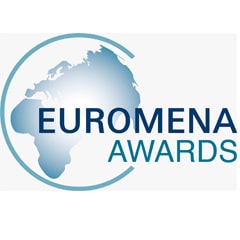Theoretical Background / Context
- Quantitative analysis deals with the determination of the quantity of the substance to be analyzed.
Methods of quantitative analysis may be classified into:
- Gravimetric analysis: It depends on isolating and weighing the final product with known pure, stable, and definite form.
- Instrumental analysis: It depends on measuring some physical properties which change quantitatively with changing the concentration of the sample.
- Volumetric analysis (Titration): It depends on measuring the volume of standard solution (titrant) used for complete reaction with the sample, which is essential for the estimation of citric acid by titration method.
- Titration is the capacity of the sample to combine with the suitable standard quantitatively through quantitative reaction. This can be shown during determination of citric acid.
- A quantitative reaction: Is the reaction that proceeds forward to produce stable product(s) such as weakly ionizable compounds, e.g. H2O, weak acids & base, sparingly soluble salts (precipitate), complex ions, etc.
The Types of Quantitative Reactions Can Be:
- Neutralization Reactions.
- H2O formation.
- Displacement: Formation of a weak acid or a weak base.
- Complexometric reactions.
- Redox reactions (Electron transfer).
- Preciptimetric reactions.
- Any sample is a solution of unknown concentration and a Standard is a solution of exactly known concentration.
The Requirements of Titrimetric Reactions Are:
- The reaction must be simple and expressed by a chemical equation.
- A single reaction must occur between the sample and titrant.
- The reaction must be instantaneous (rapid).
- Suitable standard solutions must be available.
- The endpoint should be easily detected.
Oxidation is the loss of electrons and increases in valency number, a gain of oxygen, or loss of hydrogen.
Fe2+ →Fe3+ + e-1
Reduction is the gain of electrons and reduction in valency number, loss of oxygen, or gain of hydrogen.
Fe3+ + e-1→Fe2+ , Fe2+ + 2e-1 → Fe0
Oxidizing agent or oxidant is the substance that gains electrons.
Ex: KMnO4, K2Cr2O7, Ce(SO4)2
Reducing agent or reductant is the substance that donates (lose) electrons.
FeSO4, Na2S2O3, H2C2O4
Principle Work of Citric Acid Determination by Titration
- Food, snacks, and beverages contain varying amounts of different acids which contribute to their tastes significantly.
- Acids are found among the ingredients of soda drinks giving them their pungent acidic taste.
- For instance, coca-flavored drinks possess carbonic and phosphoric acids.
- On the other hand, lemon-flavored soda such as Sprite, 7 up, and Mist contains citric acid.
Acids can be classified according to the number of ionizable hydrogen atoms they possess, into:
a) Aprotic Acids: Acids that lose one H atom during their neutralization reactions with a base (e.g. NaOH) such as hydrochloric acid (HCl) and nitric acid (HNO3).
HCl + NaOH → NaCl + H2O
HNO3 + NaOH → NaNO3 + H2O
b) Polyprotic Acids: Acids that lose more than H atom during their neutralization reactions with a base (e.g. NaOH). They can be sub-classified into:
- Diprotic: such as sulphuric acid (H2SO4).
H2SO4 + 2 NaOH → Na2SO4 + 2 H2O
- Triprotic: such as phosphoric acid (H3PO4) and citric acid C3H5O(COOH)3.
H3PO4 + 3 NaOH → Na3PO4 + 3 H2O
C3H5O(COOH)3 + 3 NaOH → Na3C3H5O(COO)3
- Concentration of citric acid in a sample of soda drink could be estimated through the citric acid titration method with a standard solution of sodium hydroxide (NaOH) of known concentration.
- Complete neutralization reaction occurs when a certain volume of the titrant (NaOH) is sufficient to neutralize the entire amount of citric acid in the sample converting it to sodium citrate salt through the assay of citric acid by titration.
- Phenolphthalein is used as an indicator in this experiment to determine the endpoint where complete neutralization occurs. Phenolphthalein changes according to the pH of the medium.
- It is colorless in an acidic medium, while pink-colored in a basic medium. Phenolphthalein is added in a few drops into the flask containing the sample containing citric acid.
- Then the titrant (NaOH) is withdrawn from the burette while shaking the flask.
- The sample will remain colorless till complete neutralization occurs.
- Near the endpoint, a pale pink color will appear in the sample flask then disappear immediately with shaking.
- After complete neutralization, the first excess drop of NaOH will turn the phenolphthalein into its pink-colored form.
- The volume of the titrant is recorded at the appearance of the first persistent pale pink color using the citric acid test method.
Note: If the excess volume of NaOH was withdrawn from the burette beyond the end point, the color of the sample in the flask will turn into intense pink color due to the high basicity
- Citric Acid and Sodium Hydroxide Titration Equation (H4) C3H5O(COOH)3 + 3 NaOH → Na3C3H5O(COO)3 + H2O
Citric Acid Titration with Sodium Hydroxide Calculation
| |
Trial 1 |
Trial 2 |
Trial 3 |
| Initial volume of NaOH mL |
|
|
|
| Final Volume of NaOH mL |
|
|
|
| Volume of NaOH used mL |
|
|
|
| Average volume of EDTA consumed during the experiment (ml) “Vavg” |
|
|
|
- Whole volume of citric acid (soda sample) = 25 ml, Volume of titrant taken (NaOH) = 9 ml ·
- According to N1 X V1 = N2 X V2
N1 = normality of NaOH = molarity X oxidation number = 0.05 X 1 = 0.05 N, V1 = average of the volume of taken NaOH from the burette = 9 ml, N2 = normality of citric acid = unknown,
- V2 =.25 ml (sample) From the equation, normality of citric acid (N2 ) = (N1 X V1 ) / V2 = (0.05 X 9) / 25 = 0.018 N
- Molarity of citric acid = normality / oxidation number = 0.018 / 3 = 0.006 M ·
If the amount of grams is required then:
0.006 moles → 1000 ml
moles → 25 ml
- Then number of moles of citric acid in the 25 ml sample = 0.00015 moles
- Then number of grams of citric acid = number of moles X M.Wt. = 0.00015 X 192.124 = 0.0288 grams
- Then the concentration of citric acid in the sample = 0.0288/25 = 0.00115 gm/ml = 1.15 mg/ml


















